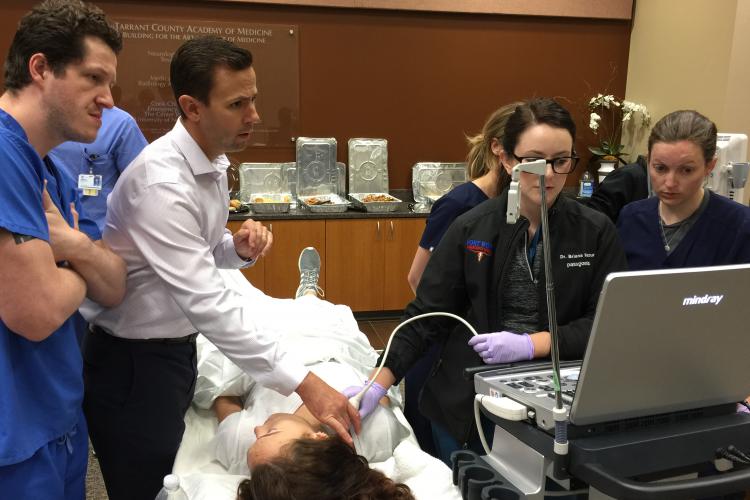
Combining steady hands and the high-tech capability of an ultrasound machine, JPS emergency medicine physicians are learning a technique to relieve extreme pain and reduce the need for powerful opioid painkillers.
Most of us are familiar with ultrasound technology and how it is used to take a look at a baby in pregnant women.
Doctors can also use ultrasound imaging, which uses sound waves to produce pictures of the inside of the body, to guide the administration of anesthetics around nerves of patients who have extremity injuries such as a hip fracture or dislocated shoulder.
Residents and faculty in the JPS Emergency Medicine Residency Program recently received training on ultrasound-guided regional nerve blocks, in which anesthetic medication is injected around the nerves that transmit pain signals from the injured body part.
Using a portable ultrasound machine, doctors place a probe over the patient’s body and view images of inside the body on a video display screen. Because they are able to precisely locate the nerves, doctors can inject the pain medication safely around the nerves, and not directly in the nerves or nearby blood vessels which could lead to damage or injury from the medication.
The procedure also means that the patients often will need less pain medication which could have unwanted side effects or lead to addiction.
The training was organized by Andrew Shedd, MD, JPS ultrasound director and associate program director of the JPS Emergency Medicine Residency Program.
JPS Emergency Medicine residents receive emergency ultrasound training and complete a one month rotation during their first year, placing them on track to log more than 300 scans during their residency. JPS also offers a one year fellowship in emergency ultrasound that provides additional training after they complete a medical residency.
